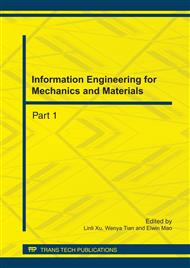[1]
Q.X. Zhang, Y.B. Feng, G.Y. Zhang, A rotary ultrasonic equipment using for drilling carbon fiber reinforced composite, J. Material science & Technology. 2 (1994) 103-106. (In Chinese).
Google Scholar
[2]
Z.J. Pei, P.M. Ferreira, M. Haselkorn, Plastic flow in rotary ultrasonic machining of ceramics, Journal of Materials Processing Technology. 48 (1995) 771-777.
DOI: 10.1016/0924-0136(94)01720-l
Google Scholar
[3]
K. Egashira, T. Masuzawa, Microultrasonic machining by the application of workpiece vibration, Annals of the CIRP. 48. 1 (1999) 131-134.
DOI: 10.1016/s0007-8506(07)63148-5
Google Scholar
[4]
Z.J. Pei, P.M. Ferreira, An experimental investigation of rotary ultrasonic face milling, International Journal of Machine Tool & Manufacture. 39 (1999) 1327-1344.
DOI: 10.1016/s0890-6955(98)00093-5
Google Scholar
[5]
T.I. EL-Wardany, D. Gao, M.A. Elbestawi, Tool condition monitoring in drilling using vibration signature analysis, Tools Manufact. 36 (1996) 687-711.
DOI: 10.1016/0890-6955(95)00058-5
Google Scholar
[6]
I. Inasaki, Application of acoustic emission sensor for monitoring machining processes, Ultrasonics, 36 (1998) 273-281.
DOI: 10.1016/s0041-624x(97)00052-8
Google Scholar
[7]
W.M. Zeng, Z.C. Li, Z.J. Pei, Experimental observation of tool wear in rotary ultrasonic machining of advanced ceramics, International Journal of Machine Tools & Manufacture, 45 (2005) 1468–1473.
DOI: 10.1016/j.ijmachtools.2005.01.031
Google Scholar
[8]
Y.B. Guo, S.C. Ammula, Real-time acoustic emission monitoring for surface damage in hard machining, International Journal of Machine Tool & Manufacture. 45 (2005), 1622-1627.
DOI: 10.1016/j.ijmachtools.2005.02.007
Google Scholar
[9]
D.E. Lee, I. Hwang, Precision manufacturing process monitoring with acoustic emission, International Journal of Machine Tool & Manufacture. 46 (2006), 176-188.
DOI: 10.1016/j.ijmachtools.2005.04.001
Google Scholar
[10]
N. Ghosh and Y.B. Ravi, Estimation of tool wear during CNC milling using neural network-based sensor fusion, Mechanical Systems and Signal Processing. 21 (2007) 466-479.
DOI: 10.1016/j.ymssp.2005.10.010
Google Scholar
[11]
Z.X. Pan, H. Zhang, Chatter analysis of robotic machining process, Journal of Materials Processing Technology, 173 (2006) 301–309.
DOI: 10.1016/j.jmatprotec.2005.11.033
Google Scholar


